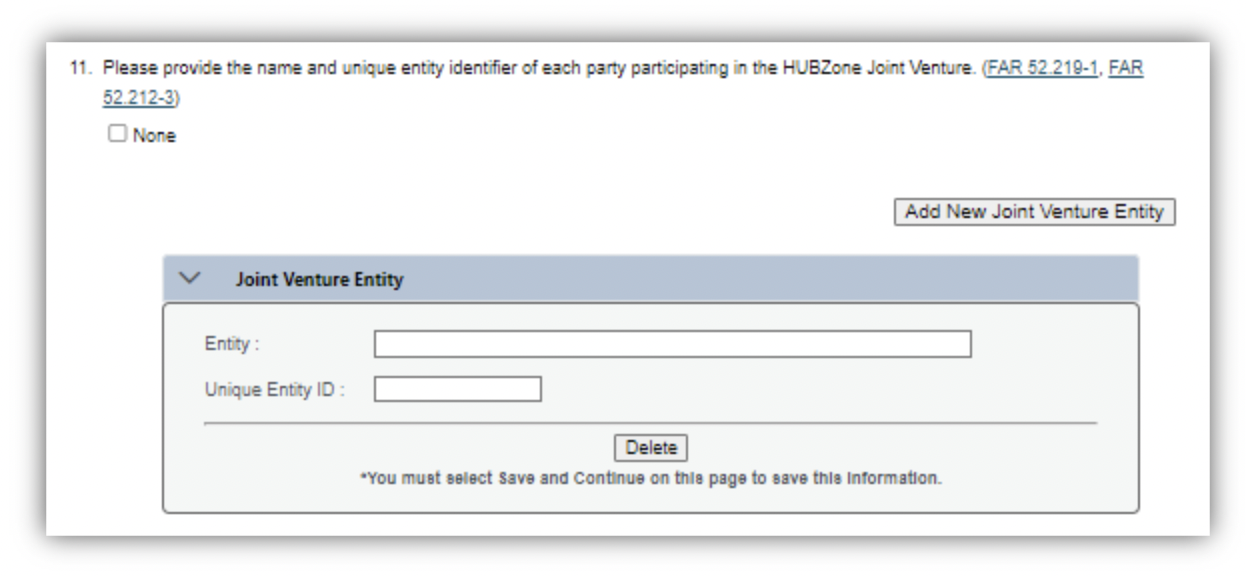In a recent post, we shared guidance on the applicable regulatory references which identify eligibility as an 8(a) program participant. As promised, GCP offers this guidance for HUBZone small business concerns’ status as a HUBZone and that of their joint ventures. For HUBZone eligibility, the FAR provides that contracting officers should review a small concern’s SAM and DSBS profiles. In the case of joint ventures, contracting officers should review the SAM profile of the joint venture.
HUBZone Concern Status
FAR subpart 19.13 regulates the HUBZone program for federal acquisitions. Specifically, FAR 19.1303(a) states: “Status as a HUBZone small business concern is determined by the Small Business Administration.” As a friendly reminder, contracting officers generally should not be asking HUBZone concerns to provide documentation which “proves” their eligibility for an HUBZone contract award. Instead, FAR 19.1303(b) goes on to state: “If SBA determines that a concern is a HUBZone small business, it will designate the concern as a HUBZone small business in the Dynamic Small Business Search (DSBS)” and “SBA’s designation also appears in the System for Award Management (SAM).” Critically, the FAR also states: “SBA’s designation also appears in SAM. Only firms designated in DSBS and SAM as HUBZone small business concerns are eligible for HUBZone preferences.” GCP recommends HUBZone concerns regularly review both their DSBS and SAM profiles to verify that their status as a HUBZone participant is displayed in those respective systems.
HUBZone Program Joint Venture Status
But, what about joint ventures? Since a joint venture formed by a HUBZone concern as the managing member and another concern is a separate legal entity with a separate SAM profile and a unique DSBS profile, the procedures for verifying the joint venture as eligible for award of HUBZone contract are slightly different. With respect to joint ventures, FAR 19.1303(c) states that “a joint venture may qualify as a HUBZone small business concern if the joint venture qualifies as small under 19.301-1(a)(2)(i); at least one party to the joint venture is a HUBZone small business concern; and the joint venture complies with 13 CFR 126.616(a) through (c).” Notice here, a three-part test for qualification of the joint venture as eligible for a HUBZone award. The first part of the test requires that the joint venture complies with SBA regulations for joint ventures and either each party to the joint venture is small under the assigned NAICS or under a Mentor Protégé Agreement. Next, at least one party, or more accurately, the managing venturer of the joint venture must be a HUBZone concern. Finally, with reference CR 126.616, those regulations state that the joint venture itself need not be certified as a HUBZone concern, but “should” be designated as a HUBZone joint venture in SAM with the HUBZone joint venture partner(s) identified by name and Unique Entity Identifier (“UEI”). As such, when completing the Reps & Certs section of the joint venture’s SAM.gov registration, the registrant should ensure that their joint venture is designated as such in SAM by clicking “Add New Joint Venture Entity” on FAR Question 11 and entering the name and UEI for each HUBZone certified company that is a member of the joint venture.

Further, the joint venture should ensure that any proposal, offer, or quote conspicuously identify the HUBZone joint venture partner(s) as a HUBZone concern. You may do so by directing the contracting officer to the DSBS and SAM profile of the HUBZone certified partner(s) in addition to providing the SAM Reps & Certs of the joint venture entity.
As a reminder, HUBZone concerns with multiple joint ventures are not permitted to submit offers through multiple joint ventures on the same procurement.
If you have any questions or concerns regarding the eligibility of your joint venture for award of a HUBZone contract, please contact Trevor Skelly or Jake Neilson. And stay tuned here for the next installment of guidance on the size and socio-economic status regulations for WOSBs and SDVOSBs.


Recent Comments